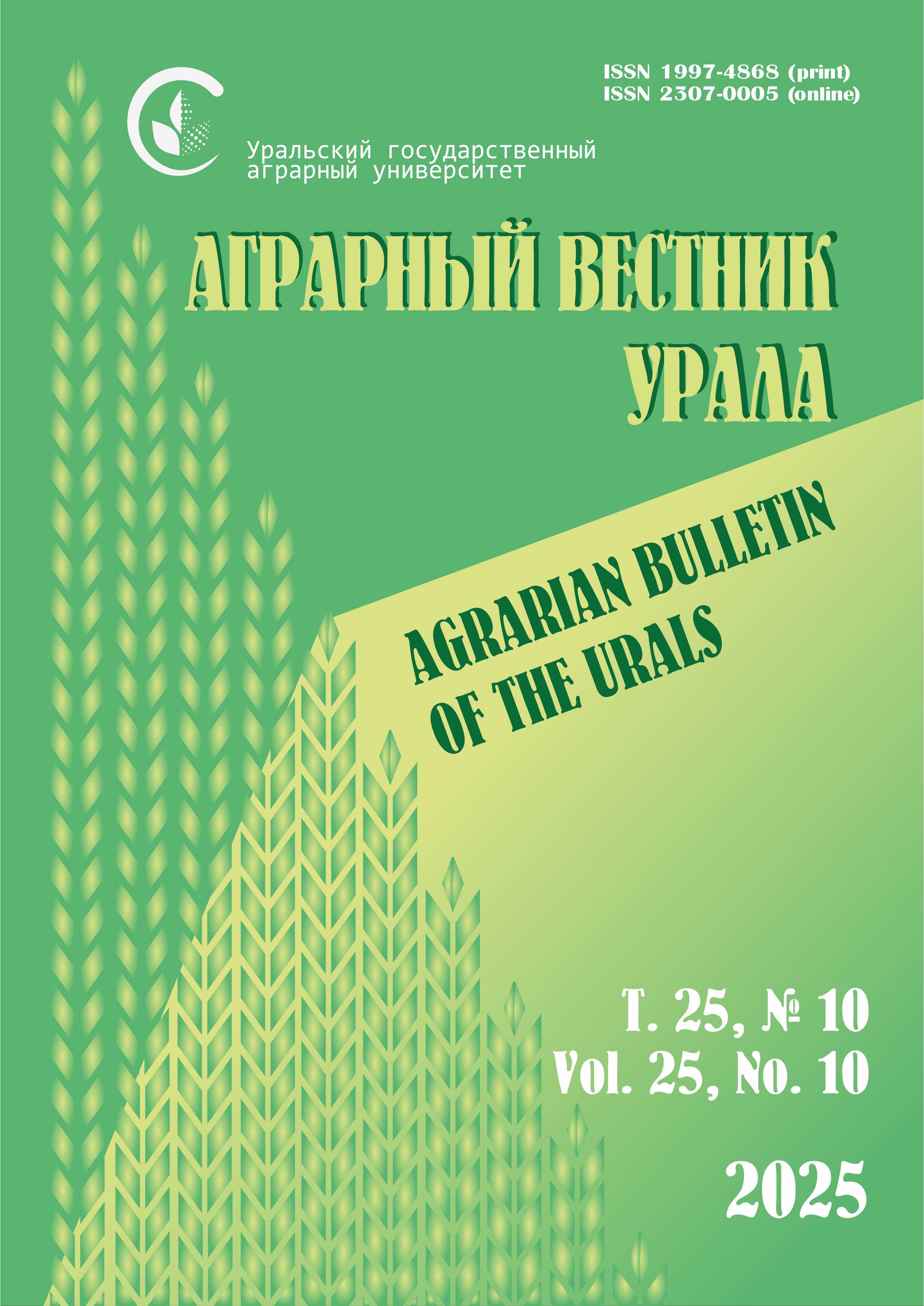Authors: L. B. Karengina,
Yu. L. Baykin,
Yu. G. Baykenova
Ural State Agrarian University, Ekaterinburg, Russia
E-mail: This email address is being protected from spambots. You need JavaScript enabled to view it.
Abstract. The purpose of the work was to study the effect of high doses of superphosphate on the yield of forage beans and the composition of phosphates in dark gray forest soil. Research methods. The studies were carried out in a microfield experiment. Doses of superphosphate are calculated taking into account the increase in the phosphorus content from medium to very high. The total phosphorus content was determined after calcining the soil, and the mineral group was determined in the natural state of the soil in an extract of 0.2n sulfuric acid, the fractional composition was determined by the method of S. Chang and M. Jackson. Results. High doses of superphosphate (the degree of phosphorus supply is high and very high) without the introduction of nitrogen and potassium fertilizers significantly reduce the productivity of beans. The optimal content of mobile phosphorus is an increased degree of supply (101–150 mg/kg according to Kirsanov). High doses of superphosphate double the total phosphate content in relation to the original soil, mineral phosphates make up 77 %, organophosphates – 22.8–23.3 %. Analysis of the fractional composition of mineral phosphates showed that the use of water-soluble phosphorus fertilizers increases the amount of phosphates of all fractions. The fraction of loosely bound phosphates increases from 5 mg/kg of soil (medium supply) to 14 mg/kg at a very high level. From the total amount of mineral phosphates, calcium phosphates occupy 20–23 %, aluminum phosphates – 12.5–14.9 %. The share of ferrophosphates practically does not change with the dose of superphosphate and is 25.3–25.7 %. The fraction of poorly soluble phosphates is the most significant: with an increased degree of supply, the content of phosphates is equal to 438 mg / kg and increases with a very high degree of supply up to 529 mg/kg of soil, this is 37.1–38.8 % of the total amount of the mineral group of phosphates. The scientific novelty lies in the calculation of the dose of phosphorus fertilizer, taking into account the stepwise transition from one degree of provision to another, from medium to high, high and very high. This approach to calculating the doses of fertilizers makes it possible to differentiate the doses of nitrogen-potassium fertilizers.
Keywords: dark-gray forest, doses of superphosphate, availability index, forage beans, group content, fractional content.
For citation: Karengina L. B., Baykin Yu. L., Baykenova Yu. G. Vliyanie vysokikh doz superfosfata na gruppovoy i fraktsionnyy sostav fosfatov temno-seroy lesnoy pochvy [Effect of high doses of superphosphate on the group and fractional composition of phosphates containing in dark gray forest soil] // Agrarian Bulletin of the Urals. 2020. Special issue “Biology and biotechnologies”. Pp. 19–27. DOI: 10.32417/1997-4868-2021-14-19-27. (In Russian.)
Download the full issue of the magazine












